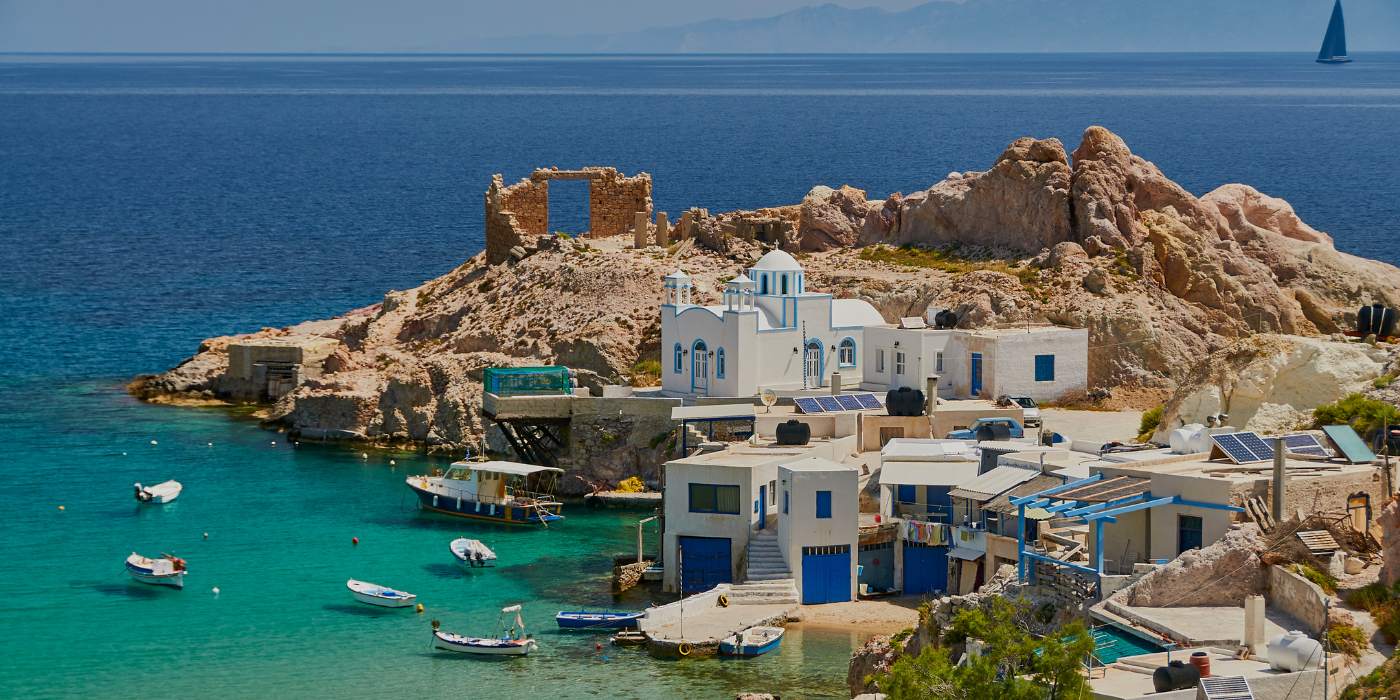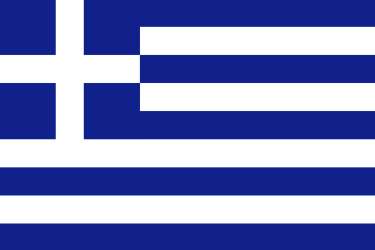

The best time to visit Milos Island is from May to October, when the sun shines brightly over its sculpted coastlines and the Aegean is warm enough for endless swimming and sailing. Summer brings peak beach days, lively harbor cafés, cultural festivals, and long evenings of golden light. Early September is especially sweet—fewer crowds, mellow weather, and locals returning to the rhythm of the island after a busy August.
Spring and autumn are ideal for hikers and nature lovers, offering a quieter atmosphere to explore volcanic landscapes and wildflower-dotted trails. Winters on Milos are mild but breezy, with most tourist services closed, making it a peaceful escape for solitude seekers or photography enthusiasts drawn to dramatic skies and waves.
For a balanced island adventure with great weather and vibrant local life, late spring through early fall is the perfect window to experience Milos in all its wild beauty and Cycladic charm.
Do you need a visa to visit the island?
No visa is required for EU, US, UK, Canadian, Australian, or New Zealand citizens for stays under 90 days. International travelers should check if a Schengen visa is required based on their nationality, as Greece is part of the Schengen Zone. Milos is part of Greece, so the same entry rules apply as for any other part of the country.
What is the best way to get to the island?
Take a domestic flight from Athens to Milos Island National Airport, which takes around 40 minutes. Alternatively, hop on a ferry from Piraeus Port in Athens—ferries range from 3 to 7 hours depending on the type. Both options land you right in Adamas, Milos' main port town.
Should I rent a car on the island?
Yes—especially if you want to explore Milos’ 70+ beaches, remote villages, and hidden geological sites. While some areas are walkable, a rental car, ATV, or scooter gives you the freedom to reach secluded spots like Tsigrado or the mines of Cape Vani.
Is the island wheelchair accessible?
Partially. Some newer hotels, restaurants, and beach paths (especially in Adamas and Pollonia) are accessible, but many historic sites, narrow village alleys, and cliffside trails can be challenging. It’s best to check in advance with accommodations and tour providers about accessibility needs.
What are the island’s most famous landmarks?
Don’t miss the moon-like Sarakiniko Beach, the pirate caves of Kleftiko, and the Ancient Theater near Trypiti. The Catacombs of Milos and the spot where the Venus de Milo was discovered are iconic and deeply rooted in history.
What are the best beaches on the island?
Milos boasts some of the most varied beaches in Greece—try Sarakiniko for surreal white cliffs, Firiplaka for easy access and colorful rock walls, and Tsigrado for adventurous entry and clear waters. Pollonia and Paleochori are also great for families and sunbathers.
What is unique about the island’s wildlife?
You may spot Mediterranean monk seals around sea caves, loggerhead turtles near quiet coves, and plenty of native birds like kestrels and herons. The island’s volcanic terrain also supports rare wildflowers and protected plant species.
What traditional foods should you try on the island?
Don't leave without trying pitarakia (local cheese pies), karpouzopita (sweet watermelon pie), and fresh grilled octopus. Local goat cheese, honey, and wines made from sun-drenched Cycladic grapes are island favorites.
Can you drink tap water on the island?
In most parts of Milos, tap water is safe but not usually recommended for drinking due to its high mineral content. Bottled water is inexpensive and widely available.
What is the nightlife like on the island?
It’s chill and charming—expect beachside cocktails, sunset lounges, and occasional live music. Milos isn’t a party island, but you’ll find laid-back bars in Adamas, Plaka, and Pollonia that stay open late in the summer months.
How can I stay connected to the internet on the island?
Most accommodations, cafés, and restaurants offer free Wi-Fi, especially in Adamas and Pollonia. Mobile coverage is generally strong in towns but can be weak or nonexistent in remote beaches and hiking trails.
What are some local souvenirs to bring home?
Look for handcrafted ceramics inspired by the island’s geology, handmade soaps, volcanic rocks, embroidered linens, local wines, and jars of sun-dried tomatoes or capers. Many shops in Plaka and Pollonia support local artisans.
Kalimera – Good morning
Kalispera – Good evening
Efharisto – Thank you
Parakalo – Please/You're welcome
Yamas – Cheers
Psomi – Bread
Nero – Water
Kafe – Coffee
Taverna – Restaurant
Thalassa – Sea
Plaka – Village name (also means plate)
Kima – Wave
Ammos – Sand
Kleisto – Closed
Anoichto – Open
Limani – Port
Syrmata – Boat garages
Kalokairi – Summer
Feta – Traditional Greek cheese
Apothiki – Store
